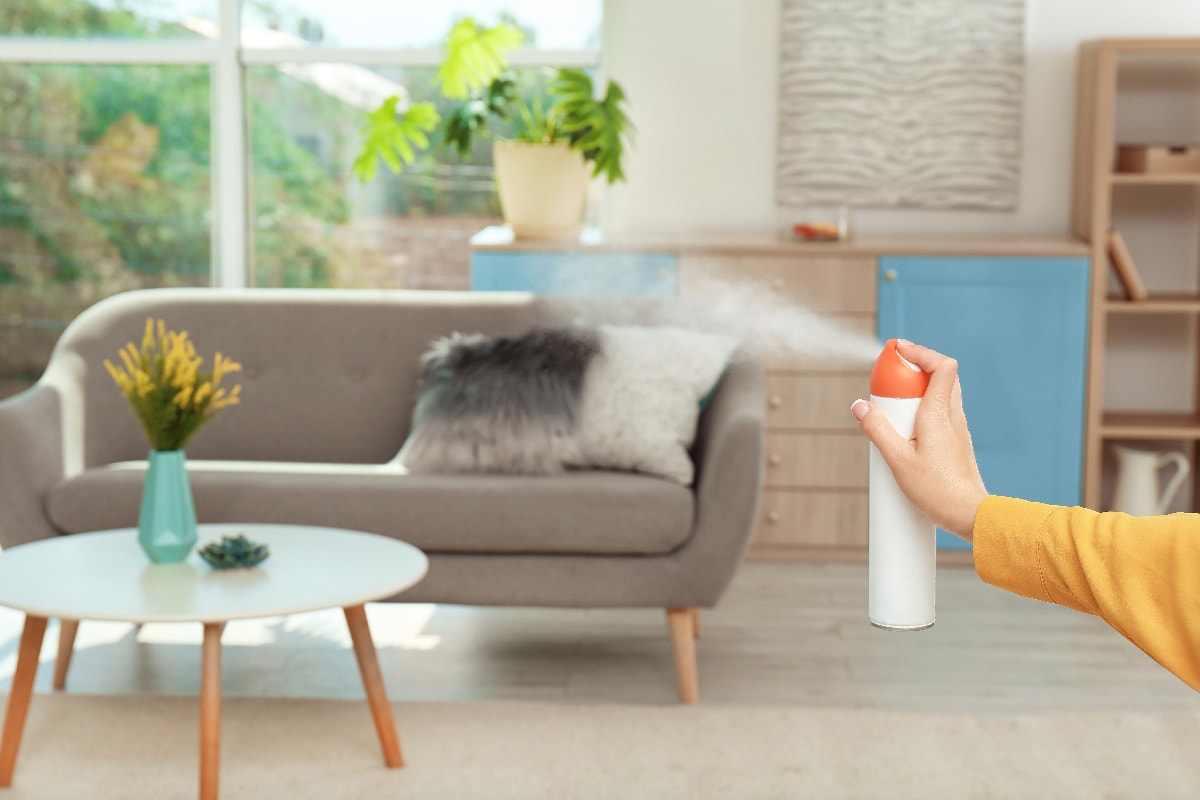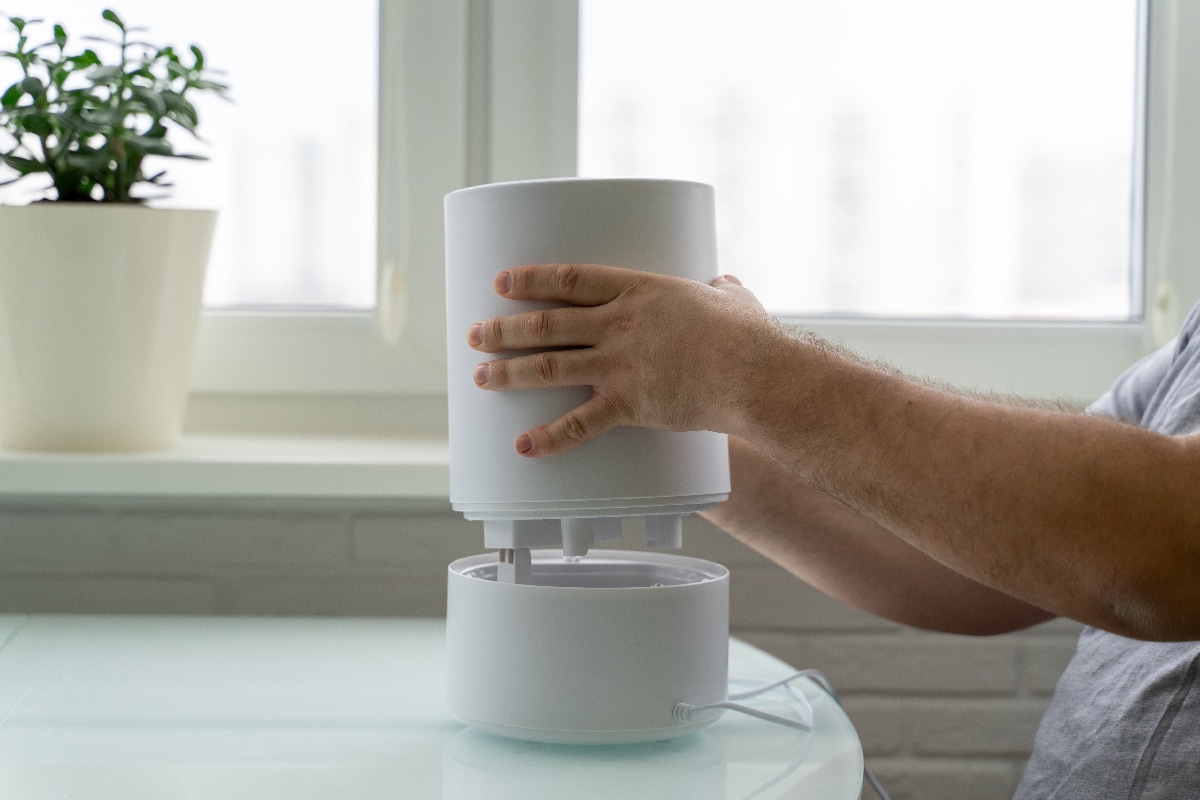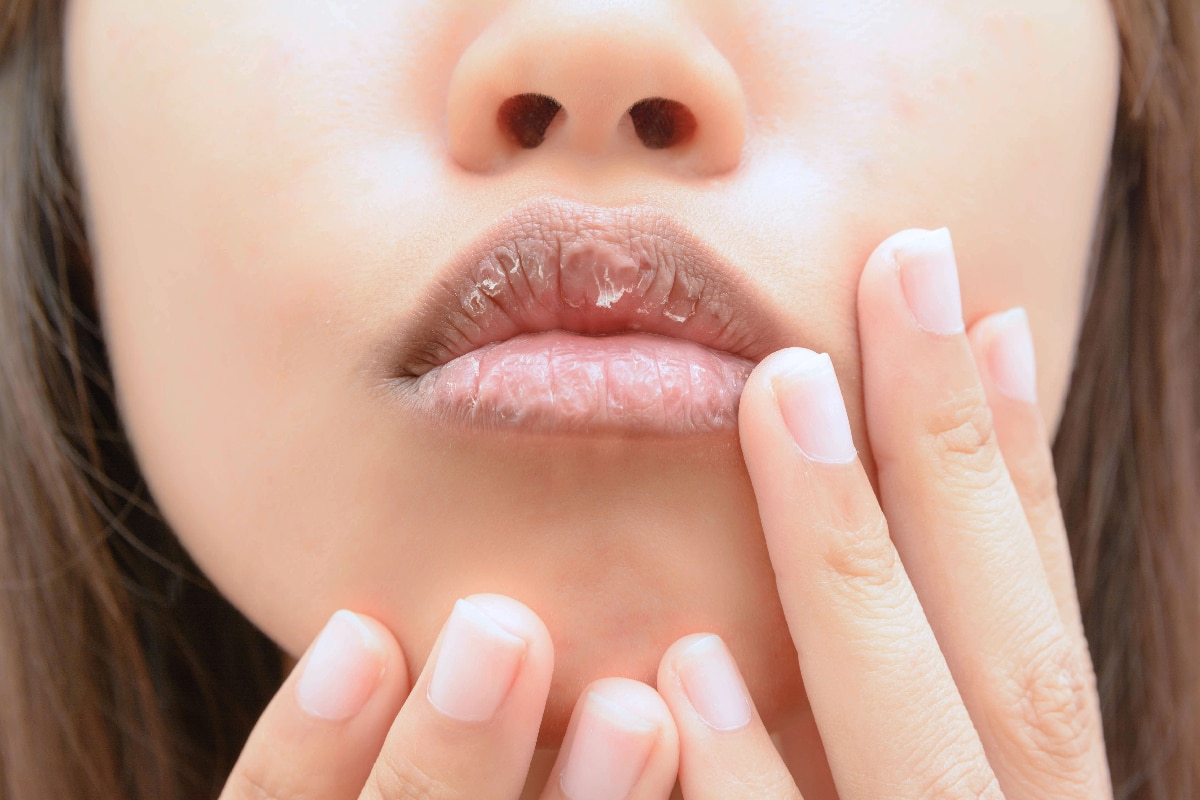You may see changes or discoloration in your humidifier filter and wonder if it's normal or something you must be alarmed about. Don't worry! We gathered the information on the telltale signs that your humidifier is already broken. Here they are.
You'll know your humidifier filter is bad or not in good condition by looking at the following telltale signs:
- Discoloration
- Bad smell
- Damage
- Mineral accumulation
- Dirty or neglected filter
- Clogged filter
- Allergy triggers
- Generic filter replacement
Humidifiers add to or balance the humidity in the room when needed. They circulate the air and manage the air quality indoors. You need to pay attention to maintaining it. Continue reading this post to learn details of the signs and how to avoid them.
![Vapor from humidifier in the morning light in a living room, How To Tell If Humidifier Filter Is Bad [Telltale Signs]](https://hvacseer.com/wp-content/uploads/2022/11/How-To-Tell-If-Humidifier-Filter-Is-Bad-Telltale-Signs-e1667781592710.jpg)
Telltale Signs Your Humidifier Filter Is Bad
When your room is dry and hot, you need a humidifier to increase moisture in your room. A dry room can cause skin problems, a stuffy nose, and nosebleeds. If there's too much dryness, you can suffer from exhaustion and dehydration as the dry air drains water from your body.
Tiny bits of mold or white-colored mold in your humidifier may not be readily visible, and you may think your humidifier is still clean. However, you can use other notable signs to tell if your humidifier filter is faulty quickly.
Types Of Filter
There are two types of humidifier filters: wick and netted. The wick filter is a sturdy, woven round sponge. It confines minerals and impurities suspended around in the water. This is called the wicking process. The netted filter is commonly flat, multi-layered, and rectangular with net patterns. It performs a similar cleaning process.
There are also humidifier filters for small or mini humidifiers. They use cotton filter stick, which is best replaced every 3 to 4 months. It's a plain white cotton stick that looks the size and shape of a cigarette, though a bit longer.
Click here to view this Honeywell wick filter on Amazon.
1. Discoloration

Yellow or brown water means impurities or mineral build-up in your unit. It's like stained water. Your water can have metal dissolved in it, and you are breathing it in as the humidifier vaporizes it. It is due to the warmed-up coil.
Minerals, such as calcium, can accumulate in your water. It turns brown and even stains your filter. You can see the dregs in the humidifier tank, filter basket, and water tray. Once you see it in these parts of your unit, it is more likely visible in the inner parts of your unit.
Click here to view this filter replacement on Amazon.
2. Bad Smell

Odor or smell is one way to detect lousy humidifier filters. The foul or musty smell indicates bacteria production, mold, and water deposits in your humidifier. It contaminates your water, and the fumes create an odorous air. In this scenario, your humidifier is a health risk that must be solved immediately. Another reason your humidifier might smell is if you last replaced your water days ago, as stagnant water begins to smell over time.
There are natural ingredients to clean your humidifier and dissipate the bad smell. Use baking soda, vinegar, or lemon juice. These are effective natural home remedies other than replacing your filter.
Click here to view this baking soda on Amazon.
3. Damage

Even if it's minor damage, like a tiny hole or rip, you must replace the filter for your unit to run efficiently. It cannot filter effectively if a part is faulty. The filter condition is essential to ensure you're breathing clean air indoors.
Never try to patch up or fix your filter in any other way. Replacement is the best solution. You can purchase filter replacements from the same shop you bought your unit from or any local shops.
Click here to view these humidifier sticks on Amazon.
4. Mineral Residue
Mineral residue can affect the efficiency of your unit, including the filter. Calcium, sodium, and magnesium are the common minerals in tap water. Choose the kind of water you pour into the unit because water with less mineral content means fewer mineral deposits for your unit.
It is advisable to use mineral water from stores or filtered water. This way, the filter won't get overworked, clearing out impurities in your water, and will work fine and continuously without impediments from minerals floating in your water.
Click here to view this demineralization pack on Amazon.
5. Dirty Or Neglected Filter

Check if your humidifier filter is turning black or brown, including the water. If so, it means your filter is overused or has over-filtered a lot of minerals, leading to a mineral build-up in your filter. Check your filter consistently, especially if placed in a dusty or high-traffic area.
Even if your filter seems fine, it is best to change your filter every three months and change your water daily. Empty your water from the humidifier tank when unused, and make sure it remains dry. Stagnant water can become a breeding ground for bacteria and mold. A dirty or neglected filter in operation can even further contaminate the air.
6. Clogged Filter
A clogged filter means the water passing through the filter is disrupted or blocked. You can test your filter by detaching it from the humidifier and running it through running water. If you see drops or uneven water flow, then your filter is full of particles blocking the continuous or free water flow.
Unfortunately, your filter is not clearing out impurities in your unit as it should, so replace it immediately. Buy extras for later filter replacements since you know you should change them every few months. Keep the reserves somewhere easy to locate.
7. Allergy Triggers

Sudden allergy symptoms can mean a dirty humidifier filter. If you're experiencing a runny nose, red eyes, sore throat, or skin irritations like cracking of your lip, your filter may be bad. A bad filter can introduce outdoor allergens into your space. Replace the filter immediately.
8. Generic Filter Replacement
Using a generic filter replacement restricts the power and effectiveness of your humidifier. It can also damage your humidifier. It is the most reliable and safest to buy filter replacements your manufacturer offers. They have durable designs for competent performance.
You can use your humidifier without a doubt, knowing that your filter is doing its job well. Installing the designated filter in your unit provides you with the excellent output you need and extends the lifespan of your humidifier.
How To Replace Your Filter
Replacing your humidifier filter is easy. Observe proper handling and safety precautions when doing it. Regular filter replacement will make you more familiar with the process each time. Follow the steps below on how to replace your filter correctly:
- Unplug the humidifier.
- Detach the upper body of the humidifier by twisting it open. Some humidifiers have arrows indicating how to turn open the unit. Generally, tilting it a bit will detach the unit.
- Empty water from the tank. Remove the old filter.
- Unpack the new filter replacement with the same brand.
- Refill it with the right level of water.
- Re-attach the upper body to the water tank.
- Plug in the humidifier.
How To Keep Your Filter Clean
A clean filter means cleaner indoor air and better health outcomes. Here are ways to take care of your filter for a longer lifespan and maximize its use and benefits for your entire household.
- Change the water daily.
- Avoid using hard water. You can use softener tablets or humidifiers built for hard water.
- Use the humidifier when needed. Remember, it adds moisture to the air.
- Add some natural alternatives to add moisture to your room, such as indoor plants.
- Set your humidifier on an auto-shutdown once it has reached the set humidity level.
- Turn your filter over whenever you refill the tank with water to keep it hydrated and not dry out, which can cause damage or a shorter lifespan.
- Remove the mineral build-up in your humidifier with a vinegar solution. Sanitize it with a 10% bleach solution. And always refer to the manufacturer's instructions. Having a clean humidifier helps to avoid overworking the filter.
Click here to view this tank cleaner on Amazon.
To Close
There are many telltale signs to confirm your humidifier filter is terrible. The water turning yellow or brown, odor, mineral deposits, clogged filters, damage in the filter, filters that need to be replaced, and more can all contribute to a faulty filter. In these situations, you must immediately return the filter to prevent health hazards.
Learn more about replacement filters, correct usage, and cleaning in these posts:
Can You Use A Humidifier Without A Filter?
How To Clean Humidifier Without Vinegar [Step By Step Guide]






